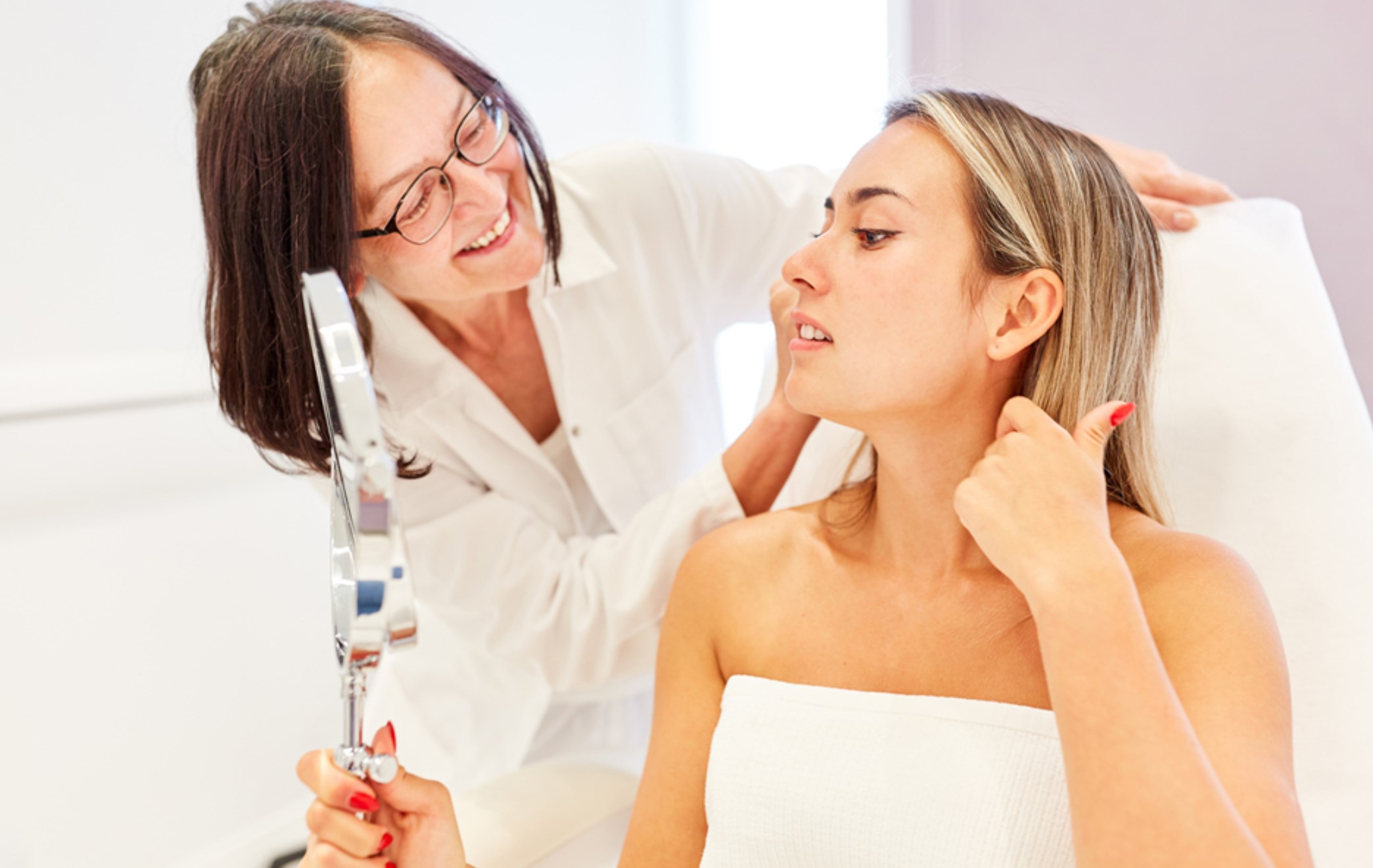blog
6 Signs Your Patient Has Had “Bad Botox” And What Can Be Done to Fix Them

Jul 22 2022
Reading Time: 4 Minutes
Author: Patricia Pezzano
Most of us are very familiar with what bad Botox looks like. You’re bound to have come across stories and images of celebrities with overdone neuromodulators.
These cases tend to give this generally safe cosmetic procedure a bad name. When done correctly, it can significantly reduce wrinkles and give patients a more youthful appearance. But at the hands of an untrained person, a Botox injection could go wrong in many ways. However, there are ways to remedy the situation.
Here are six telltale signs that your patient has had bad Botox and what you can do to fix the problem:

1. Spock Eyebrows
If your patient has overly arched eyebrows—sort of like Mr. Spock in Star Trek—then that’s one of the signs of bad Botox. This means that the previous injector didn’t inject Botox in the right place.
Spock brows happen when Botox is injected only at the central part of the upper forehead, leaving the sides untouched. When the central forehead is weakened and the outer sides remain active, it causes the central brow to drop and the outer brow to appear like it’s lifted too high. The result: Spock brows.
This is typically the result when the injector has a limited understanding of anatomy and vectors.

How to Fix Spock Brows
To fix Spock eyebrows, you need to wait for the neuromodulator to reach its full effect—which is around 10 to 14 days after the injection—and inject a few units of Botox laterally into the frontalis muscle above each brow. This will stop the muscle from being overly active. Make sure not to use more than four units of Botox to achieve the desired results.
2. Upper Eyelid Hooding
Also called droopy eyelid or blepharoptosis (ptosis for short), upper eyelid hooding is one of the signs of bad Botox.
When the neuromodulator is injected in the wrong area, the toxin can migrate to the upper eyelid and weaken the muscle that holds it up (levator palpebrae). This makes lifting the eyelids very difficult.
When the injector uses a dose that’s too high in the forehead, the muscle gets over-paralyzed, causing the eyebrow to drop. In turn, this pushes the eyelids down.
However, ptosis can also happen when the patient touches or rubs the area that has been injected with Botox within four hours after the treatment.
How to Fix Upper Eyelid Hooding
Upper eyelid hooding usually goes away on its own within four to six weeks. For a quicker fix, you can use a special eyedrop called apraclonidine. Use 0.5% of the eyedrop every three to four hours to stimulate the muscle that raises the eyelid (Muller’s muscle).
3. Brow Ptosis
When your patient’s brows are drooping, they are most likely experiencing brow ptosis. Brow ptosis happens when Botox is injected too low into the frontalis muscle, the muscle that raises the eyebrows.
It could also happen when the dose used is too high or if the Botox has been improperly diluted with normal saline or adrenaline.
Another cause of brow droop is when forehead lines are treated without first treating the glabellar complex (the muscle that pulls the brows down). If the glabellar complex is active, but the frontalis (forehead) is not, the risk of brow ptosis is higher.
How to Fix Brow Ptosis
You can fix brow ptosis by injecting a little more neurotoxin in the glabellar complex to correct the asymmetry. Another option is to perform a nonsurgical brow lift using dermal fillers.
4. Facial Asymmetry
Another one of the signs of bad Botox is facial asymmetry (one side of the face doesn’t match the other). When the units of Botox used are unevenly distributed on the two halves of the face, facial asymmetry occurs.
This usually happens when the previous injector incorrectly evaluated the patient’s face, didn’t confirm the patient’s desired result, or is unaware of the difference one millimetre would make.
How to Fix Facial Asymmetry
If the injections are asymmetrical, you can correct it by adding more Botox where needed to even things out. For instance, if one side of the face is relaxed and the other isn’t, you can add more Botox to the “stronger” side to relax the muscle and even it out.
5. Frozen Expression
Of all the Botox horror stories, this is probably the most common: a frozen expression.
A patient with an expressionless look is the result of using too much Botox around the eyes, forehead, and mouth. It causes the tiny muscles under the skin that give us the ability to express emotions to weaken or “freeze.” The result is that infamous blank look.
How to Fix a Frozen Expression
The solution to a frozen expression caused by bad Botox treatments depends on what the problem is. For instance, if the patient has a look of permanent surprise, a few strategic injections on either side of the eyebrows will tone down the look.
However, if the frozen expression is caused by over-injection, the only solution is to wait for the bad Botox to wear off.
6. There’s No Difference
Your patient may not be showing any “bad” side effects such as Spock brows, ptosis, facial asymmetry, or a frozen expression, but if they look the same even after they have had Botox, then it means the treatment didn’t work as intended.
How to Fix Botox That’s Not Showing Any Results
The best fix is to wait for 10 to 14 days to see the true results of the treatment. In some patients, it can take as long as three weeks for the full effects to become visible.

Learn Expert-Level Botox Injection Techniques From APT
A successful Botox treatment requires a combination of knowledge, proper technique, and hands-on learning. You will become a pro at all these elements when you train at APT Injection Training.
We’re here to help you build a stellar reputation by providing you with the skills necessary to effectively and expertly perform Botox injections as well as fix/avoid bad Botox treatments.
Visit our website to learn more about our Botox training courses and how you can get international certification in aesthetic injectable therapies.
Tips to be a
Successful Injector!
Free E-Book download
 Student Log in
Student Log in
 1267 Cornwall Rd, Unit 300, Oakville, Ontario L6J 7T5
1267 Cornwall Rd, Unit 300, Oakville, Ontario L6J 7T5

 (289) 271-5718
(289) 271-5718




































